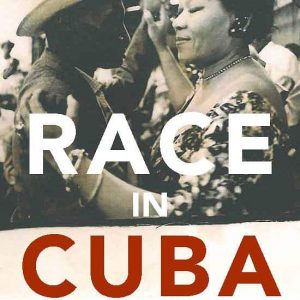Race in Cuba: Essays on the Revolution and Racial Inequality. By Esteban Morales Domínguez. Edited and translated under the direction of Gary Prevost and August Nimtz. New York: Monthly Review Press, 2013. Glossary. Notes. Index. 244 pp. Paper, $19.95.
María Elena Díaz, University of California, Santa Cruz
Is there a Cuban racial problem? This charged question opens up one of the essays in Esteban Morales Domínguez’s book Race in Cuba: Essays on the Revolution and Racial Inequality (p. 87). The author is a noted scholar and one of the most prominent black advocates for racial equality in Cuba today. His short answer to the question is a categorical “yes,” an unusual position that he expounds in 11 short essays and 3 interviews collected in this book. The pieces were all written, and some of them published, in Cuba between 2002 and 2012 and translated into English for their North American publication.
What often makes the discussion of race in Cuba particularly difficult is the entanglement of such discussion with internal and international polemics about the revolution itself, a problem Morales Domínguez must also contend with. Although racial issues have figured prominently in Cuban historiography and cultural studies in the United States during the last 25 years, Morales Domínguez boldy argues that a problematic “silence” has long enveloped the race question in Cuba on various fronts, including research, media, education, and politics, among others. Some of his publications, including this book, attempt to disrupt that silence. A letter signed in 2009 by 60 African American scholars and activists drawing attention to racial discrimination and repression in Cuba seemingly constituted an external trigger for the turnaround. The book presents a critical Afro-Cuban perspective on race from inside the revolution that addresses both international and domestic publics. Morales Domínguez calls on Cubans to take control of their own race story and to engage in an internal discussion on manifestations of racism, which some sectors in the island would prefer to supress as either potentially divisive or simply irrelevant. What makes these essays a compelling read is not only this alternative analysis of race in the revolution that may be gaining traction in Cuba. The author’s ways of navigating political, national, and racial affiliations in crafting his arguments are important, too…
Read the entire review in the Hispanic American Historical Review

Comments are closed.